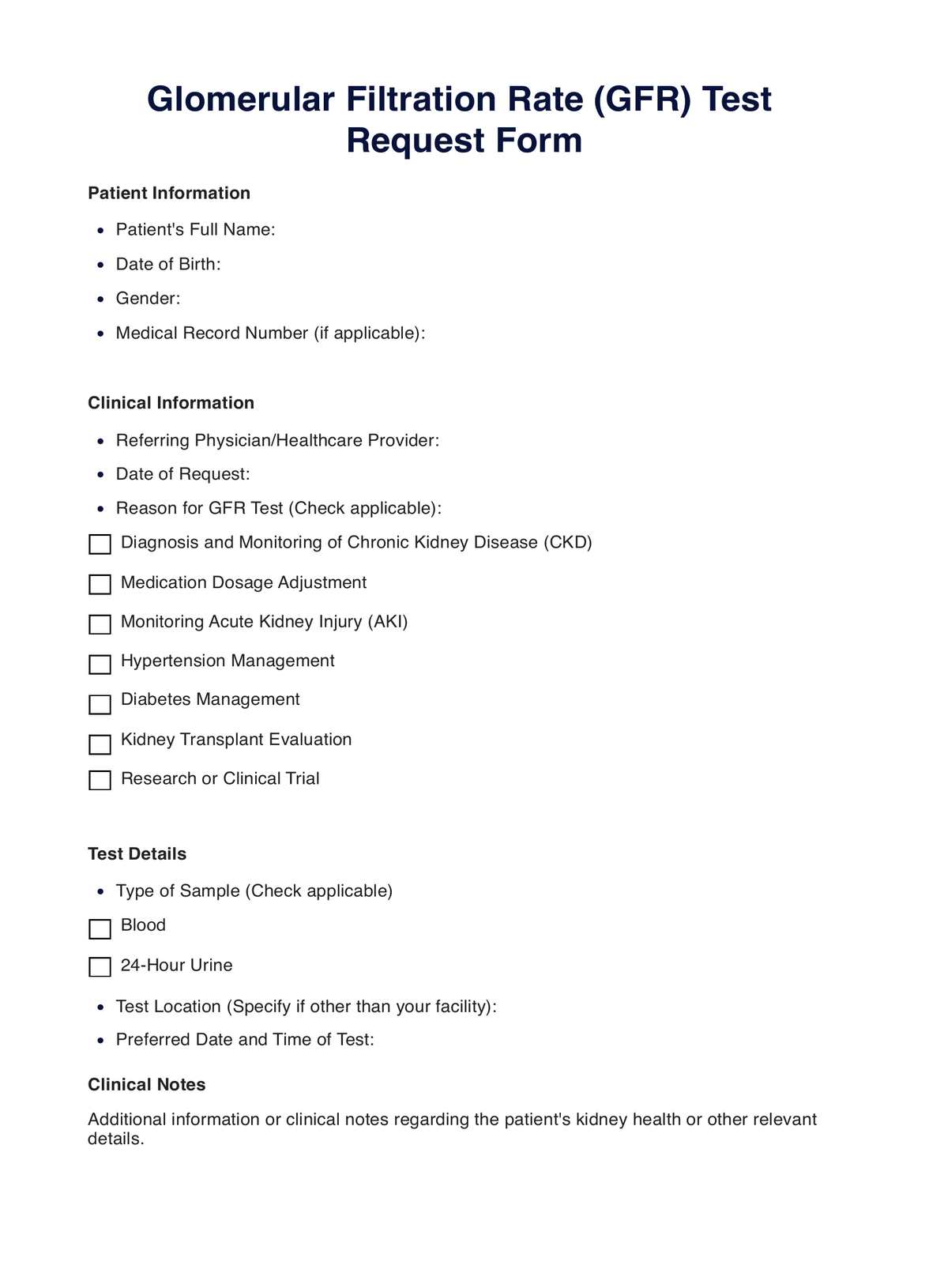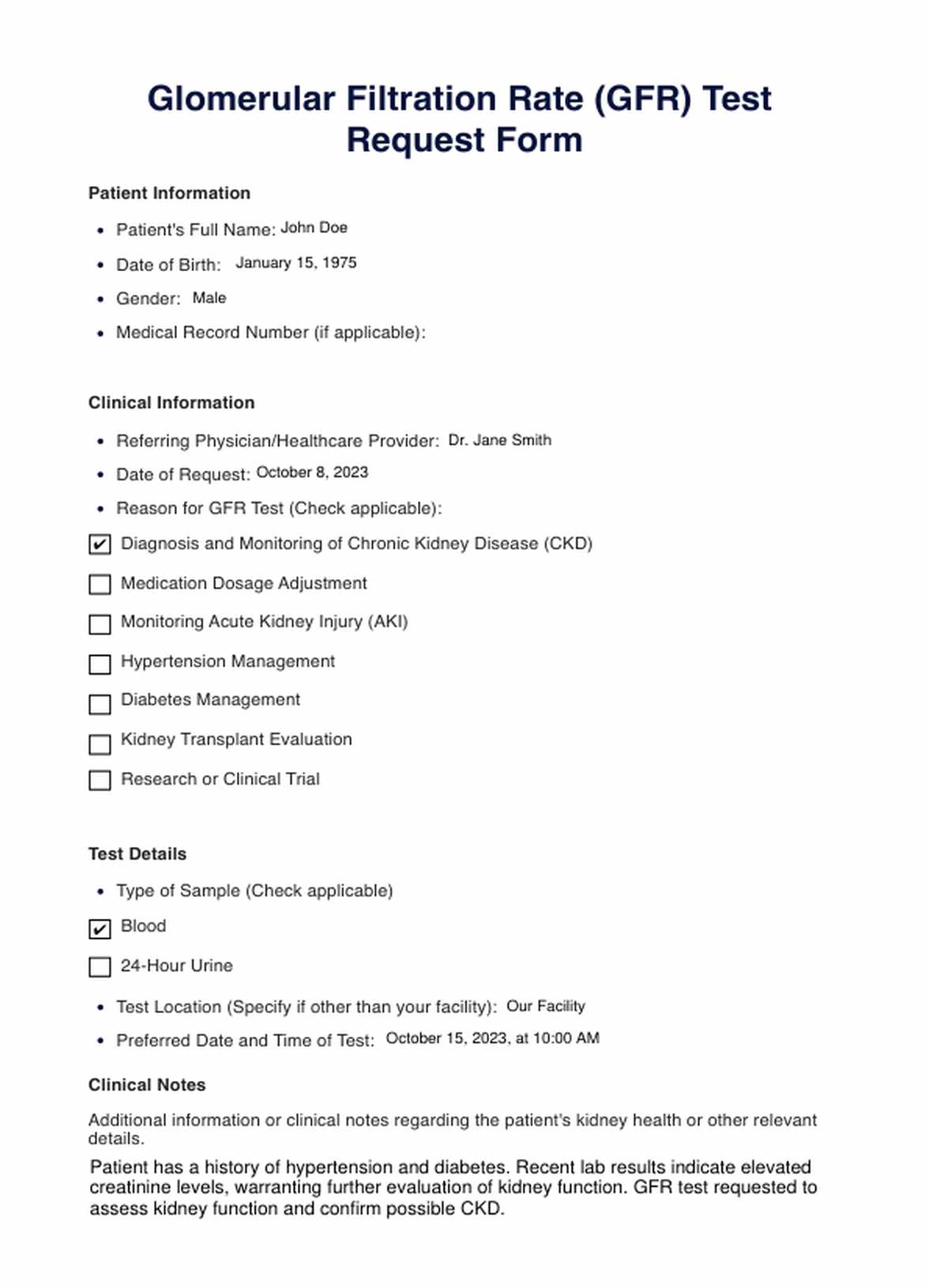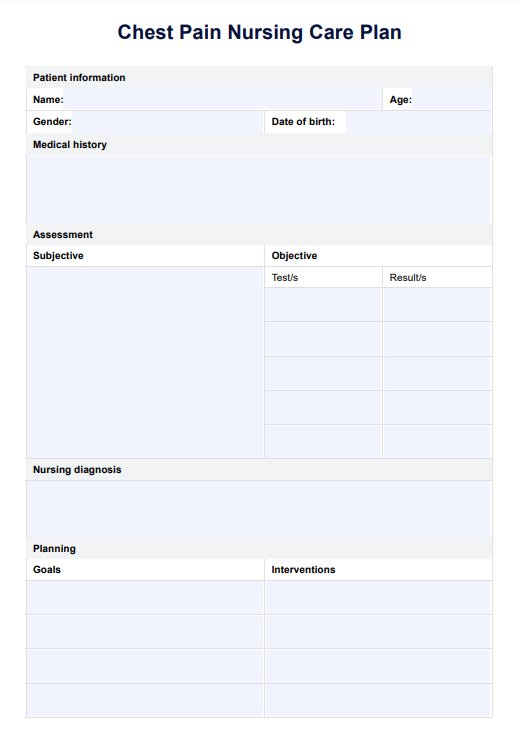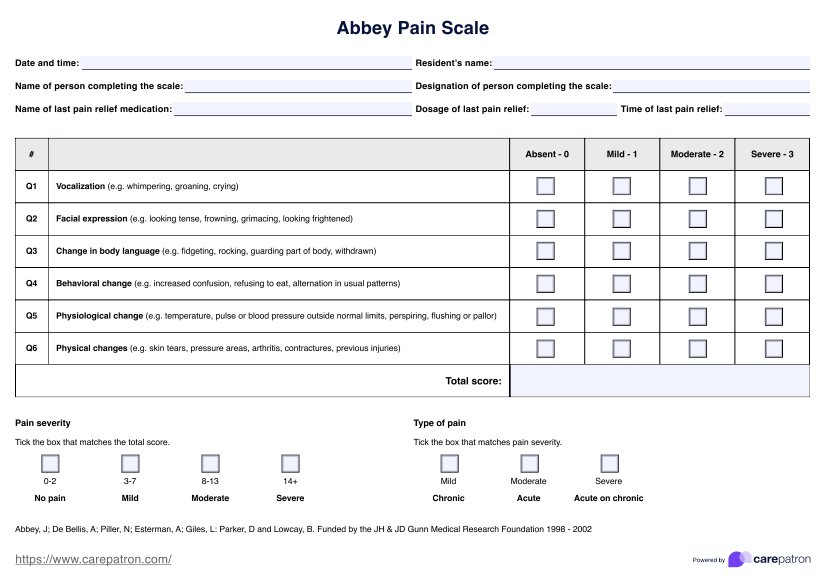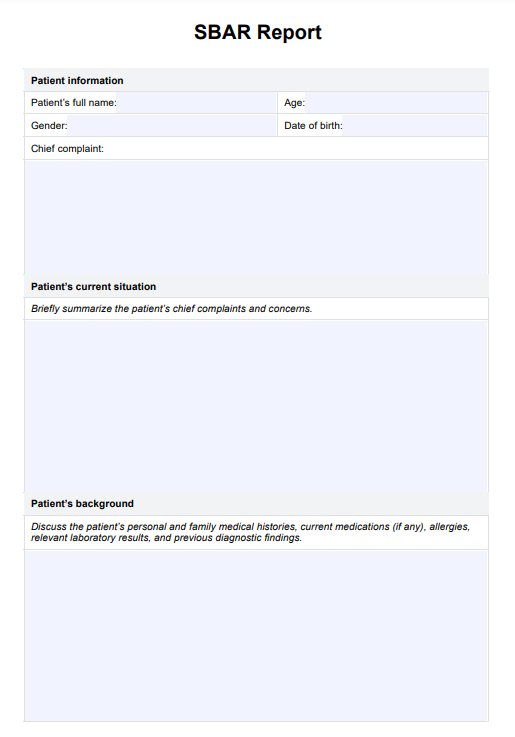Glomerular Filtration Rate
Accurate Glomerular Filtration Rate Test for Kidney Health. Understand your kidney function with precise GFR results.


What is a Glomerular Filtration Rate (GFR) Test?
The Glomerular Filtration Rate (GFR) test is a crucial diagnostic tool used in nephrology, which focuses on studying and treating kidney disorders. The GFR test measures the rate at which blood is filtered by the tiny blood vessels within the kidneys called glomeruli. These filtration units are pivotal in removing waste products and excess substances from the bloodstream, maintaining proper fluid and electrolyte balance, and regulating blood pressure.
The test is vital for assessing kidney function and diagnosing various kidney-related conditions, such as chronic kidney disease (CKD). CKD is a progressive condition characterized by a gradual loss of kidney function, which can ultimately lead to kidney failure if left untreated. Identifying kidney dysfunction is essential for effective management and intervention.
The GFR test is typically performed through a blood sample or by measuring creatinine clearance, a waste product produced by muscle metabolism and eliminated through the kidneys. By analyzing the level of creatinine in the blood or urine and considering factors like age, gender, and body size, healthcare providers can estimate a person's GFR.
The result is expressed in milliliters per minute per 1.73 square meters of body surface area (mL/min/1.73 m²). A normal GFR is usually around 90 mL/min/1.73 m² or higher. A lower GFR suggests impaired kidney function, and the degree of impairment can help classify the chronic kidney disease stage, guiding treatment decisions.
Glomerular Filtration Rate Template
Glomerular Filtration Rate Example
How does it work?
The Glomerular Filtration Rate (GFR) test can be calculated using different methods, with the most common one being the Modification of Diet in Renal Disease (MDRD) equation. Here are the key steps and factors involved in how it works:
1. Collection of Blood or Urine Sample
The GFR test typically begins with collecting blood or 24-hour urine samples. The blood sample is tested for creatinine levels, while the urine sample measures the amount of creatinine excreted over 24 hours.
2. Creatinine Measurement
Creatinine is a waste product generated by muscle metabolism and excreted by the kidneys into the urine. Creatinine levels in the blood and urine are critical for GFR calculation. Higher creatinine levels in the blood and lower levels in the urine indicate impaired kidney function.
3. Determining Body Surface Area (BSA)
The GFR result is often adjusted for body surface area, calculated based on age, gender, and body size. Commonly used reference values include 1.73 m² as the standard BSA.
4. Applying the GFR Calculation Formula
The MDRD equation is one of the formulas used to estimate GFR: the formula considers creatinine levels, BSA, age, and gender.
5. Result Interpretation
The final GFR result is expressed in milliliters per minute per 1.73 square meters of body surface area (mL/min/1.73 m²). A higher GFR value indicates better kidney function, while a lower value suggests decreased kidney function.
6. Staging Kidney Disease
The GFR result is crucial in staging chronic kidney disease. CKD is classified into five stages, with stage 1 being the mildest and stage 5 indicating kidney failure.
When would you use this test?
The Glomerular Filtration Rate (GFR) test is a crucial diagnostic tool primarily employed by healthcare practitioners, particularly nephrologists and general phyicians, to assess kidney function. Here are the key scenarios and circumstances when the GFR test is commonly used:
- Chronic Kidney Disease (CKD): The most common and critical application of the GFR test is diagnosing and monitoring chronic kidney disease. It helps determine the stage of CKD and guides treatment decisions.
- Medication Dosage Adjustment: Some medications are excreted through the kidneys. For patients with kidney impairment, the GFR test is essential to adjust medication dosages to prevent drug accumulation and toxicity.
- Preoperative Assessment: Before surgery, especially in older patients or those with known kidney issues, a GFR test may assess their kidney function to ensure they can safely tolerate anesthesia and surgery.
- Monitoring Acute Kidney Injury: In cases of sudden kidney dysfunction or acute kidney injury (AKI), repeated GFR tests can help track changes in kidney function and guide treatment.
- Hypertension Management: Hypertension (high blood pressure) can cause or result from kidney dysfunction. GFR measurements aid in identifying the impact of hypertension on kidney function and tailoring treatment.
- Diabetes Management: Diabetes can lead to kidney damage (diabetic nephropathy). Regular GFR testing is essential for individuals with diabetes to detect and manage kidney complications.
- Kidney Transplant Evaluation: For kidney donors and recipients, the GFR test plays a vital role in determining the suitability of a transplant and assessing the recipient's post-transplant kidney function.
- Research and Clinical Trials: GFR is a key parameter in clinical trials and research studies related to kidney diseases and various medical conditions
What do the results mean?
The Glomerular Filtration Rate (GFR) test results are crucial for assessing kidney function and diagnosing conditions such as chronic kidney disease (CKD). The GFR is measured milliliters per minute per 1.73 square meters of body surface area (mL/min/1.73 m²). Here's what common GFR results typically mean:
- Normal GFR (Above 90 mL/min/1.73 m²): A GFR value above 90 is considered normal and indicates healthy kidney function. There is usually no sign of kidney disease in this range.
- Mildly Reduced GFR (60-89 mL/min/1.73 m²): A GFR between 60 and 89 is often considered mild kidney impairment. It may suggest the early stages of chronic kidney disease (CKD), but treatment may not be required.
- Moderately Reduced GFR (30-59 mL/min/1.73 m²): A GFR in this range signifies moderate kidney dysfunction. It is indicative of stage 3 CKD, and medical intervention becomes more critical to slow the progression of the disease.
- Severely Reduced GFR (15-29 mL/min/1.73 m²): A GFR of 15 to 29 indicates severe kidney impairment, typically categorized as stage 4 CKD. Patients in this stage may require more aggressive treatment, including dietary changes and medications, to manage kidney disease.
- Kidney Failure (GFR Less than 15 mL/min/1.73 m²): A GFR less than 15 indicates end-stage kidney disease or kidney failure. Patients usually require renal replacement therapy, such as dialysis or a kidney transplant, to sustain life at this stage.
Research & Evidence
The Glomerular Filtration Rate (GFR) test has a rich history rooted in understanding kidney function and its significance in healthcare.
The study of kidney function dates back to ancient civilizations, with early insights into the importance of urine production and the role of the kidneys in maintaining bodily equilibrium. In the 19th and early 20th centuries, physicians and scientists introduced the concept of "renal clearance" to measure the kidneys' efficiency in clearing substances from the blood.
The development of accurate methods for measuring creatinine in the early 20th century marked a significant milestone. Creatinine, a waste product excreted by the kidneys, became a crucial marker in assessing kidney function. The MDRD study, conducted in the 1990s, played a pivotal role in refining the estimation of GFR. The study led to the creation of the MDRD equation, widely used for GFR estimation in clinical practice.
In 2002, the National Kidney Foundation's KDOQI guidelines emphasized the importance of GFR estimation for diagnosing and managing chronic kidney disease. These guidelines have significantly influenced clinical practice.
Numerous clinical trials have demonstrated the utility of GFR testing in diagnosing kidney diseases, determining appropriate drug dosages, and monitoring disease progression. Large-scale epidemiological studies have established the relationship between GFR levels and adverse health outcomes, highlighting the significance of kidney function in overall health.
The Kidney Disease: Improving Global Outcomes (KDIGO) organization and similar international bodies have provided guidelines for using GFR estimation in various clinical settings, ensuring standardized practice worldwide.
References
- American Kidney Fund. (2023). Blood test: eGFR (estimated glomerular filtration rate). American Kidney Fund. https://www.kidneyfund.org/all-about-kidneys/tests/blood-test-egfr
- Crna, R. N. M. (2016, December 19). Glomerular Filtration Rate test. Healthline. https://www.healthline.com/health/glomerular-filtration-rate
- Ewumi, O. (2023, June 19). What to know about glomerular filtration rate. https://www.medicalnewstoday.com/articles/glomerular-filtration-rate
- Hoffman, M., MD. (2010, October 25). Creatinine test. WebMD. https://www.webmd.com/a-to-z-guides/creatinine-and-creatinine-clearance-blood-tests
- Lu, C. M., MD PhD. (2022, December 6). Estimated Glomerular Filtration Rate (EGFR) test - testing.com. Testing.com. https://www.testing.com/tests/estimated-glomerular-filtration-rate-egfr/
- News-Medical.net. (2023, May 18). Glomerular Filtration Rate (GFR) testing. https://www.news-medical.net/health/Glomerular-Filtration-Rate-(GFR)-Testing.aspx
- Smith, M. (2018, January 9). What is a glomerular filtration rate (GFR)? WebMD. https://www.webmd.com/a-to-z-guides/glomerular-filtration-rate
Commonly asked questions
Healthcare providers, including nephrologists, general physicians, surgeons, and specialists in various medical fields, typically request GFR tests.
GFR tests are used to assess kidney function, diagnose chronic kidney disease (CKD), adjust medication dosages, monitor acute kidney injury, evaluate hypertension and diabetes management, assess kidney transplant suitability, and for research purposes.
GFR is typically estimated by measuring creatinine levels in the blood or urine and adjusting for age, gender, and body size. Various equations, such as the Modification of Diet in Renal Disease (MDRD) equation, are used to calculate GFR.
A GFR test is relatively quick, typically taking only a few minutes for a blood draw or urine collection. The test time is short, but the results may take some time to be processed and reported to the healthcare provider.


